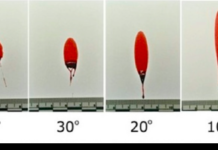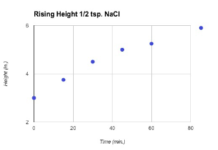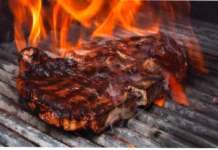“Mary had a little lamb; its fleece was slightly gray
It didn't have a father, just some borrowed DNA
It sort of had a mother, though the ovum was on loan,
It was not so much a lambkin, as a little lamby clone.”
—-Julian Rubin (juliantrubin.com)
The famous sheep named Dolly was cloned in late 1996. Dolly was one of the first successful cloning of an adult animal, and has left a mark on cloning ever since. Since then the first deer has been cloned in 2003 at Texas A&M University, and cloned “sniffer” dogs in South Korea in 2008. A fighting bull was cloned in 2010 by a team of scientists from the Valencia Foundation for Veterinary Research and the Prince Felipe Research Center in Spain using the same method that was used for Dolly.

Cloning is the act of creating an identical copy of any species by replacing the nucleus of a regular cell with the reproductive cell. By doing this, the cells’ division is changed, and the cell divides to become another being. So no, they aren’t instantaneous replicas of the same age, grown in a lab.
According to University of Utah researchers, one reason for cloning is to save endangered species. Utah says that endangered species have been cloned such as Gaur, a form of wild cattle, a Mouflon, and a species of wolf, in hopes of increasing population by clones. However, all have been unsuccessful attempts. Scientists have even considered bringing back extinct species, such as mammoths and prehistoric dinosaurs, but only gone as far as cloning an extinct Pyrenean ibex that died seven minutes after birth.
Because of the delicacy of the cells, cloning is a process that is rarely successful. The ratio of successful clones to unsuccessful clones is 30 to 1000, says Utah’s Genetics Department.
A 2006 article on ScienceDaily.com even states that, “The loss of more than 80 percent of embryos early in pregnancy is consistent in animal cloning overall.”
Even when these experiments are successful, the clones aren’t exactly identical and have different personalities, a slightly different identifying mark, risk of serious birth defects, and half the life expectancy, says the Food and Drug Administration (FDA).
Another reason for cloning is for medical purposes from testing everyday products to testing cures for the incurable diseases. Mice have been of significance because of the similarities between their and human organs, according to University of Utah‘s genetics department. Having mice with the same genetic make up helps show how humans may react to this different cures and products.
According to FDA scientists, cloning has been taking place for more than a half a century now, especially in the food industry. Meat isn’t the only thing being cloned either. Fruit is also cloned because it takes so long to grow, so by cloning there’s more of it in circulation.
There has been controversy over cloning animals that provide meat to grocers because consumers feel uncomfortable about eating cloned meat.
In surveys from Rutgers University regarding views of cloning, they reported that most people found, “The word cloning brings to mind negative images evocative of science fiction.”
“People around the world are divided on the subject of cloning.” says the Oracle Education Foundation. “While there are benefits, there are also risks. There is a good and a bad side to it.”

This work is licensed under a Creative Commons Attribution-NonCommercial-NoDerivs 3.0 Unported License














proud momma
i didnt know cloning was true…..im latehon…..
this article is very interesting and good , good Job you should be proud.
If they can clone other animals this way could they clone people soon as well?
i hope cloning isnt simply that would be pretty bad if it was
I liked how you provided examples of both succesful and unsuccesful cloning. I also liked how you provided reasons of how cloning is beneficial. It really helps to develop your article.
Did the cloned sheep show any sign of weakness or unsafe defects?